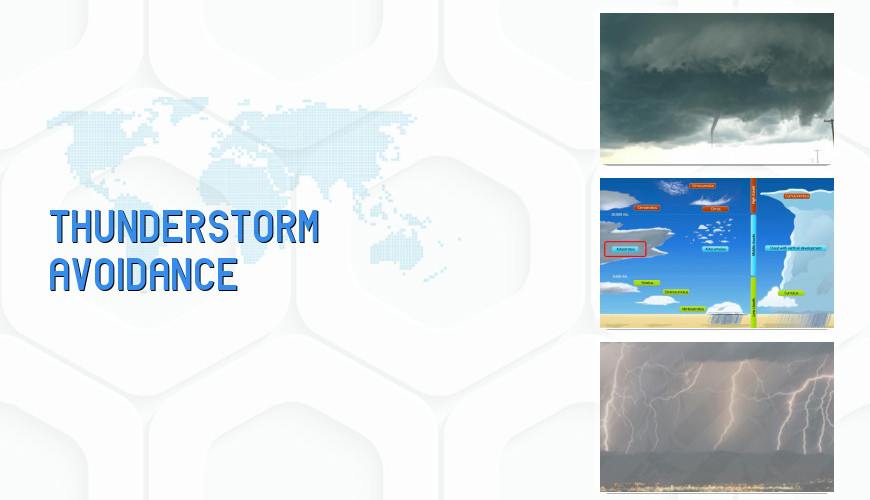
Course Information
This course is an outstanding review of the threats and avoidance procedures for convective activity while enroute or during arrival/departure. This program includes the following information: General definitions about convective activity, the types of threating weather patterns, the life-cycle and parts of thunderstorms to include the anvil, downdrafts, gust fronts, roll clouds. A review of forecasting tools such as convective outlook, meso-scale information, and meteorological impact statements (MIS). Weather radar review of bow echoes and other warning indications that the pilot can use to avoid the effects of convective activity and a discussion of the treat in the mid-latitudes of extra-tropical cyclone activity. This program is best review prior to the spring and summer thunderstorms season or prior to travel to areas adversely affected by convective activity.
Content of the Course
| Slide | 70 | Duration | 00:36:40 | Exam | No |
|---|
- COURSE START
- DEFINITIONS
- Bow Echo
- Convective Outlook
- Derecho
- Downdraft
- Extra-tropical Cyclone
- Gust Front
- Meso-scale Convective System
- Meso-scale Information
- Meteorological Impact Statement (MIS)
- Roll Cloud
- Severe Thunderstorms
- Shelf Cloud
- Super-cool Liquid Water
- Updraft
- CLOUD TYPES
- High-level clouds
- Mid-level clouds
- Low-level clouds
- THUNDERSTORM STAGES OF DEVELOPMENT
- Mature Stage
- Decaying Stage
- THUNDERSTORM TYPES
- Single Cell
- Thunderstorm Cluster (Multi Cell)
- Squall Line
- Supercell
- HAZARDS TO AVIATION
- Tornadoes
- Turbulence
- Icing
- Hail
- Low Ceiling and Visibility
- Effect on Altimeters
- Lightning
- Engine Water Ingestion
- GROUND-BASED WEATHER RADAR
- Echo Intensity (Reflectivity)
- Intensity of Precipitation
- WSR-88D Modes
- Radar Reflectivity – Base Reflectivity
- Composite Reflectivity
- Ground Radar Information—Flight Planning
- Data Link of Ground Radar Information to the Cockpit
- AIRBORNE WEATHER RADAR
- Airborne Weather Radar Echo Avoidance
- Intense or Extreme Echo Avoidance
- DOS AND DON’TS OF THUNDERSTORM AVOIDANCE
- Dos Before Entering a Storm
- Dos and Don’ts for Thunderstorm Penetration
- COURSE END

